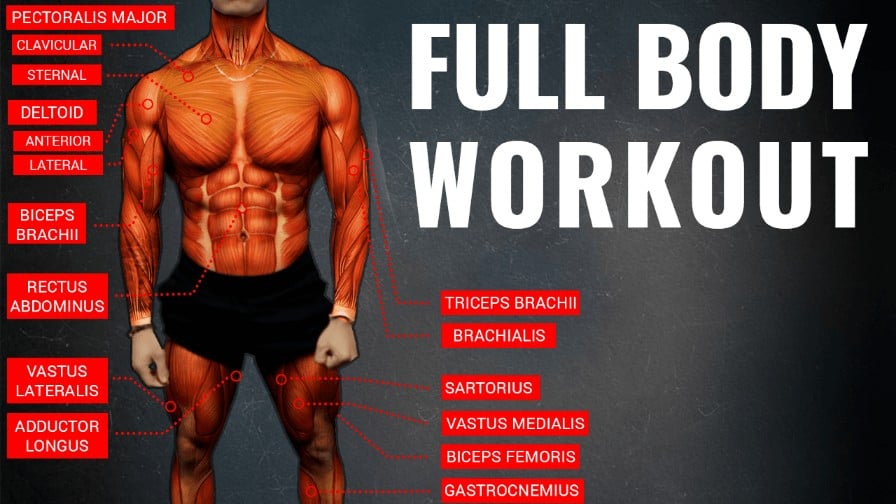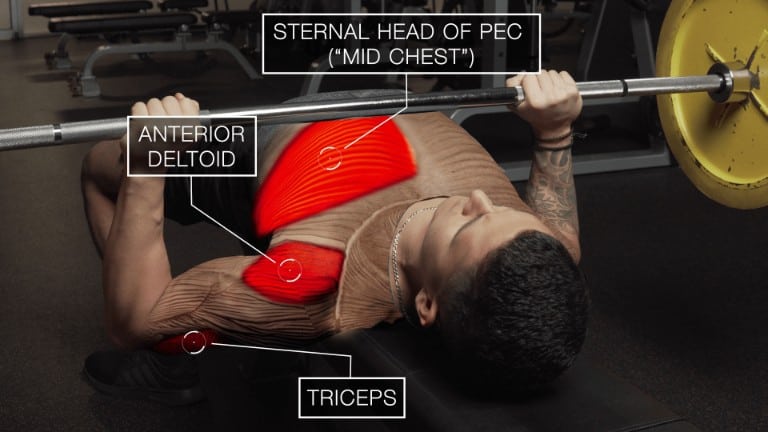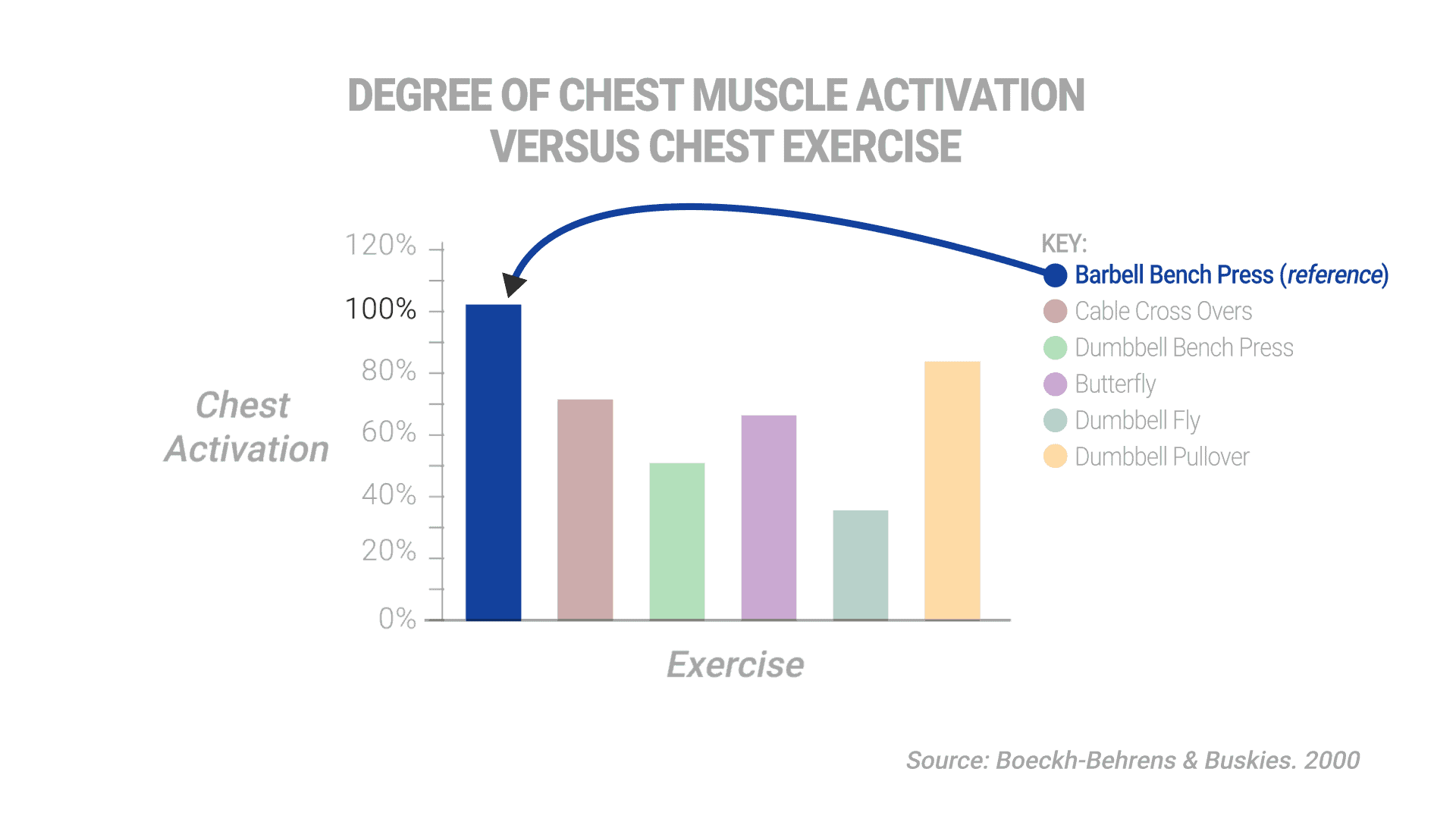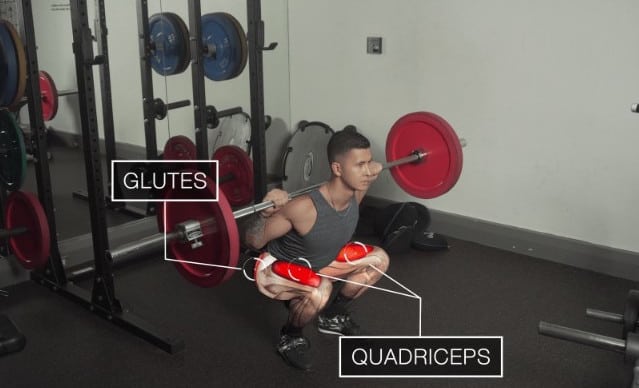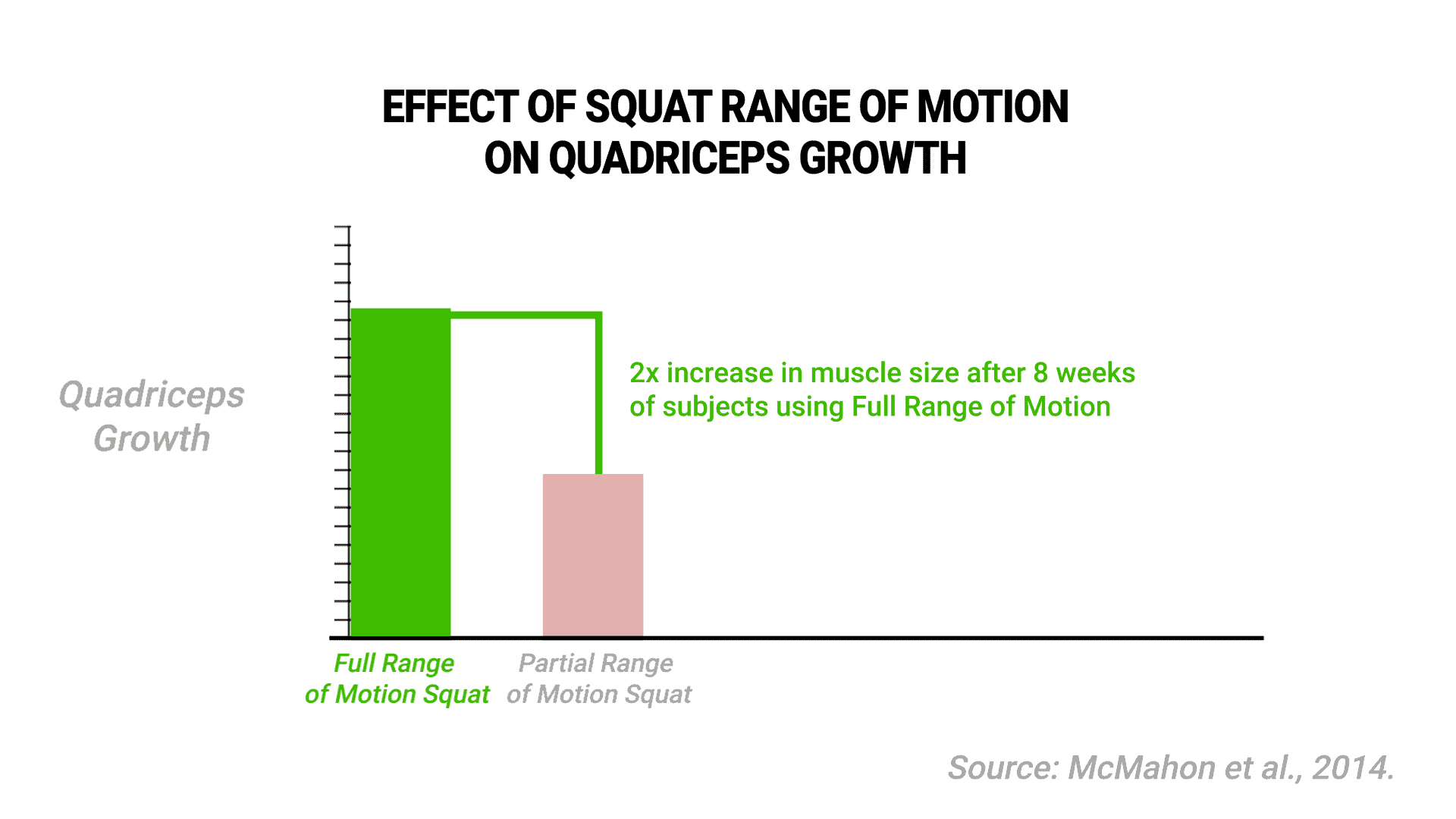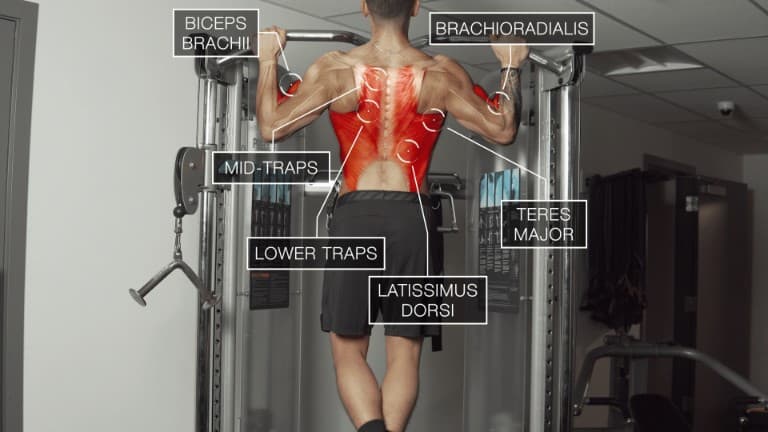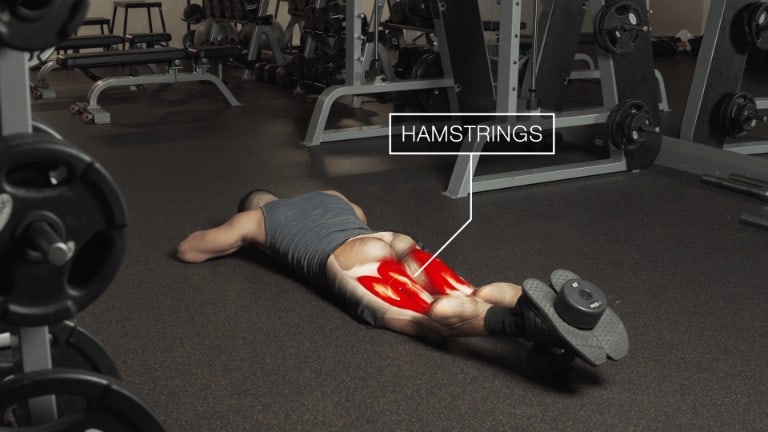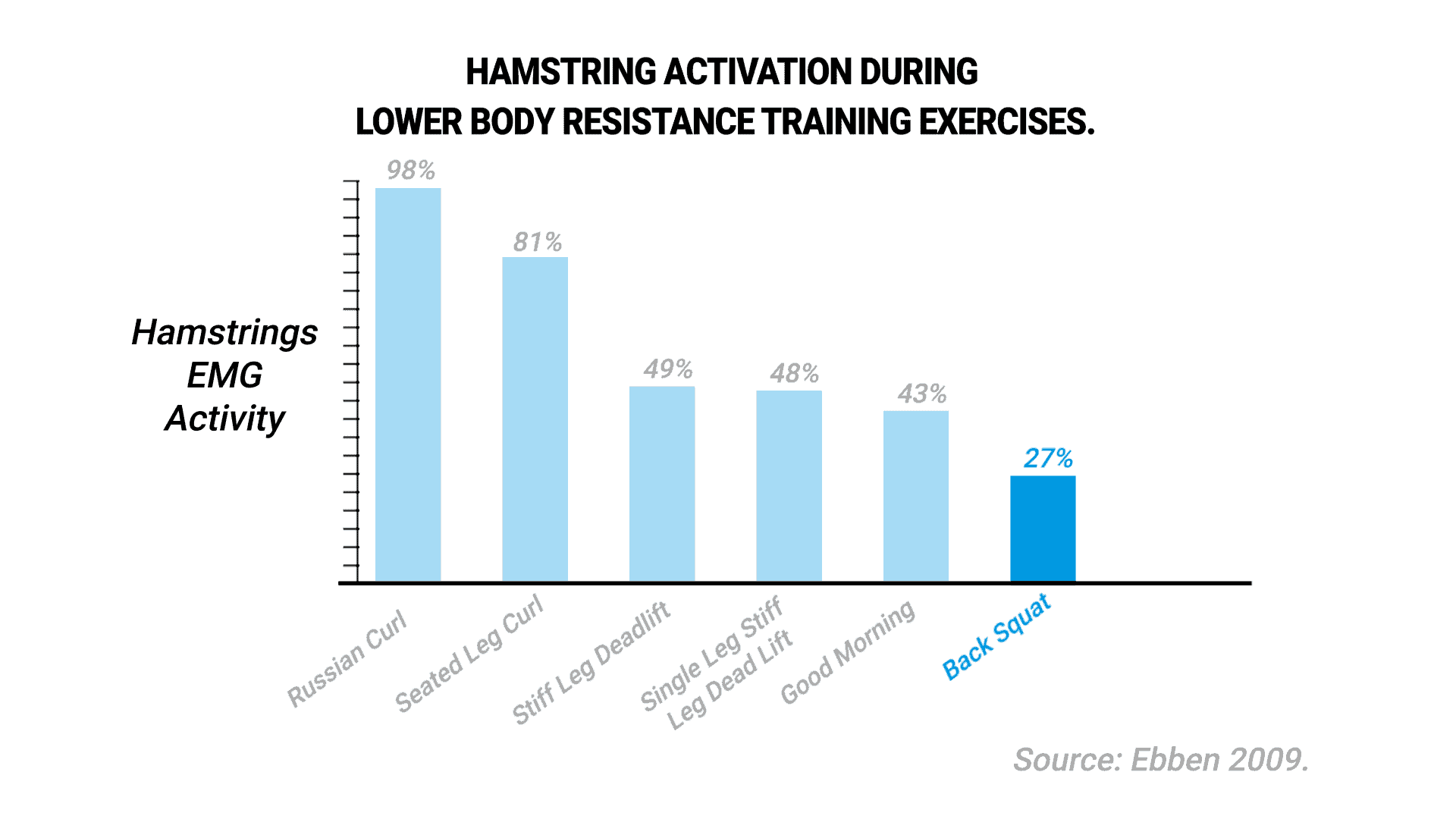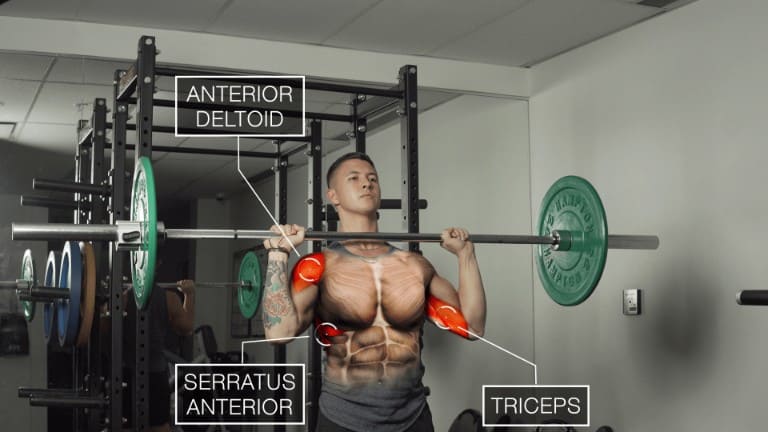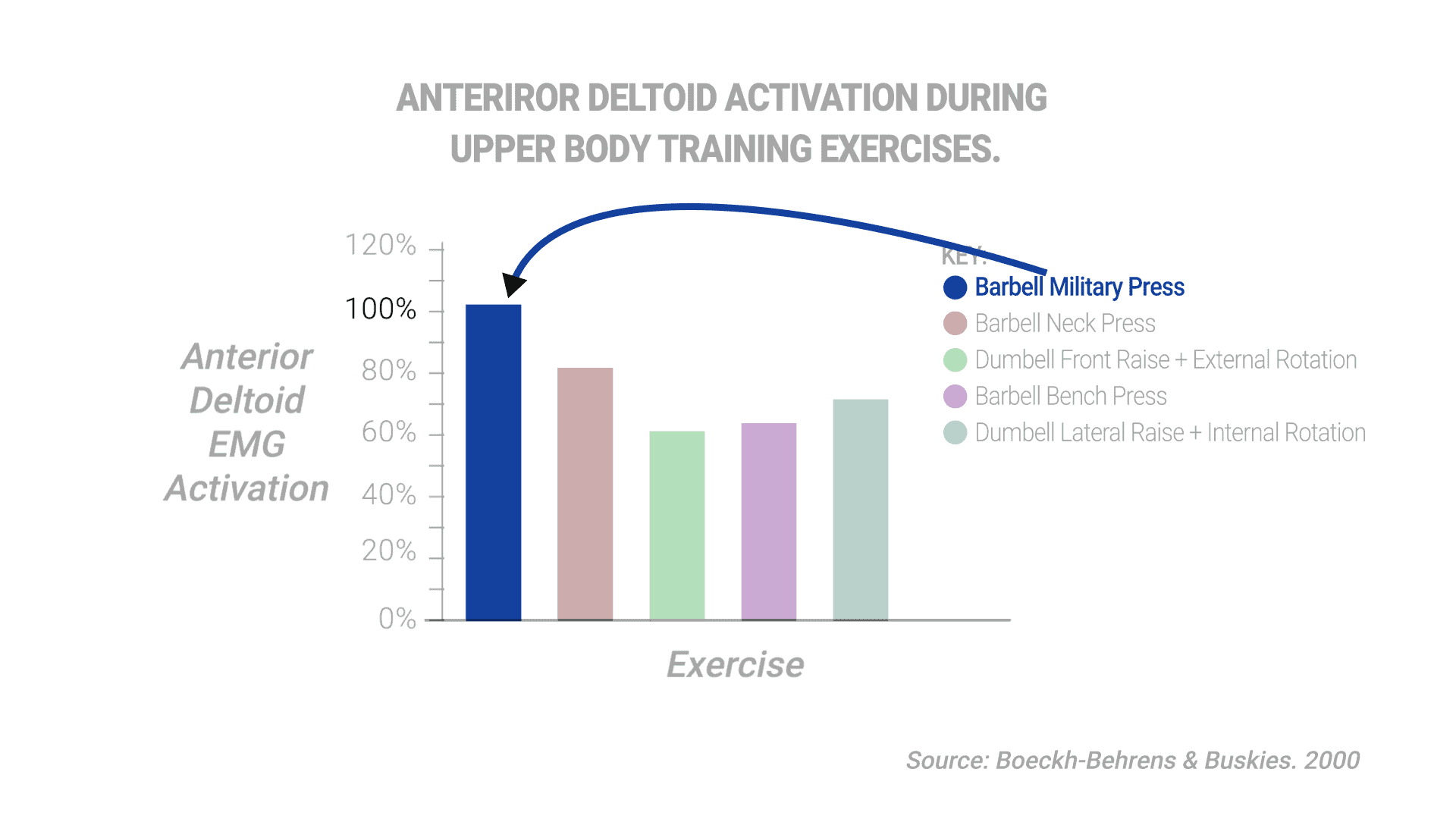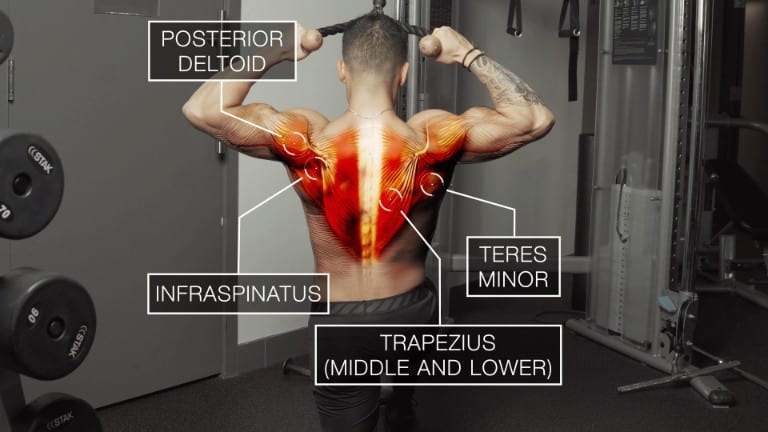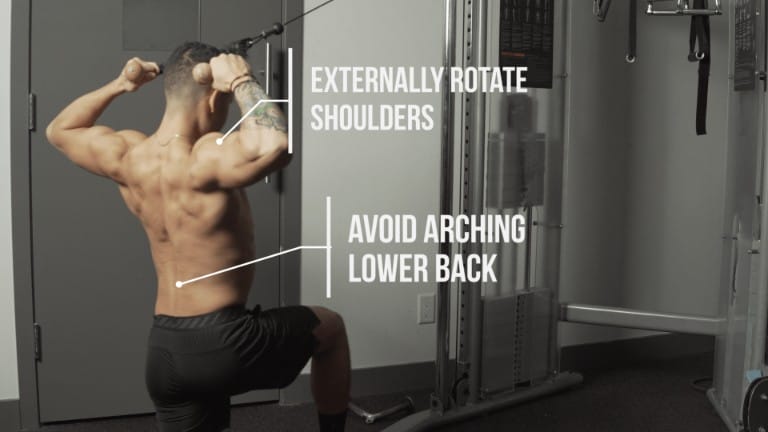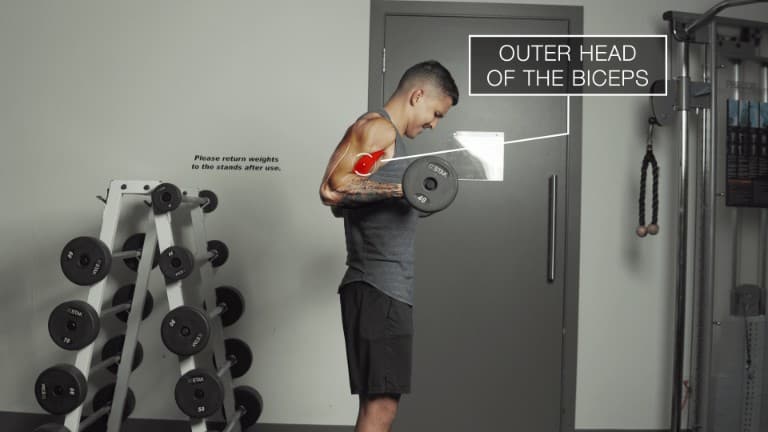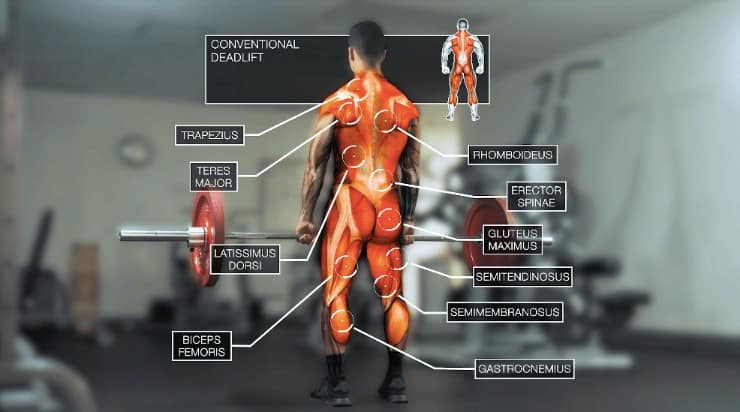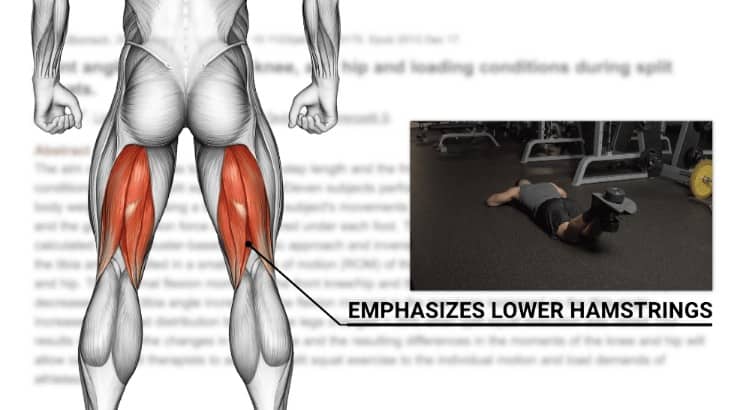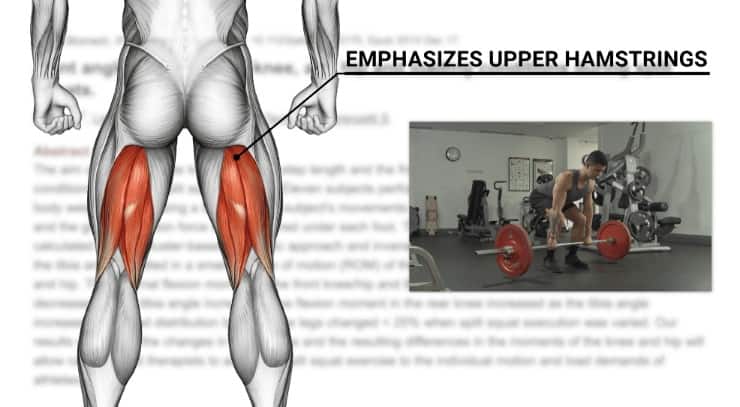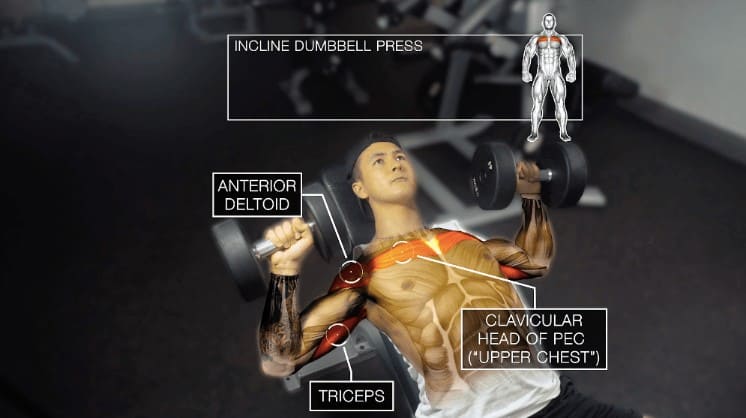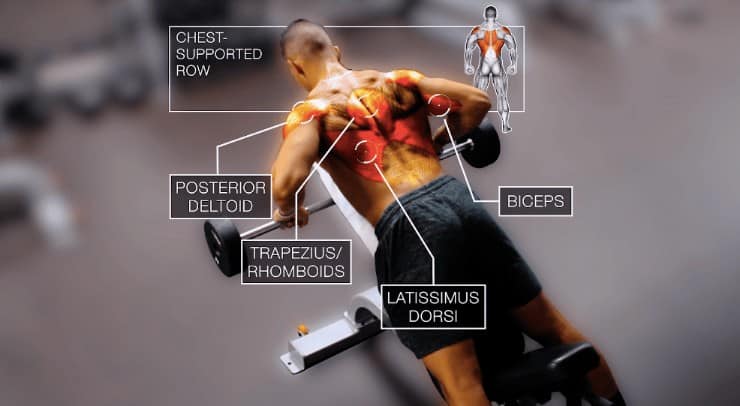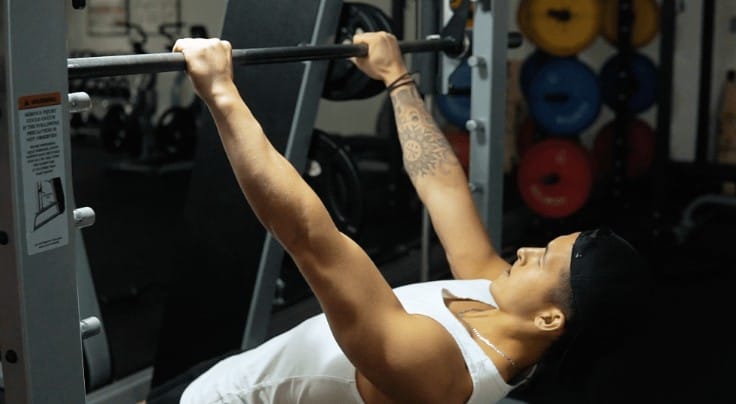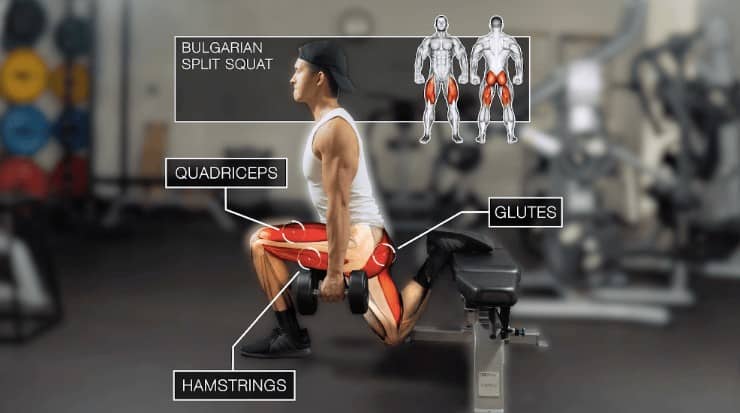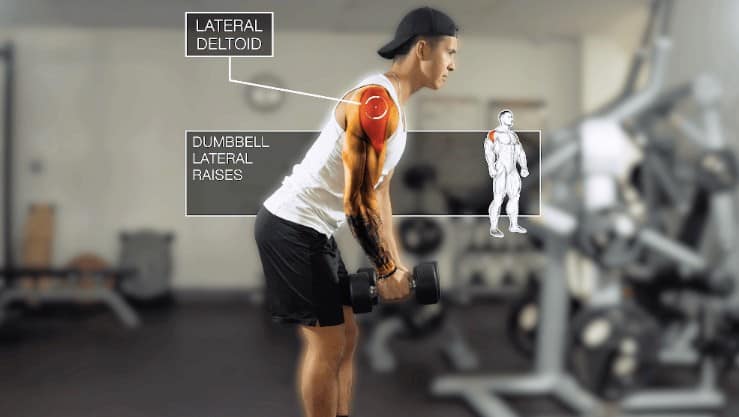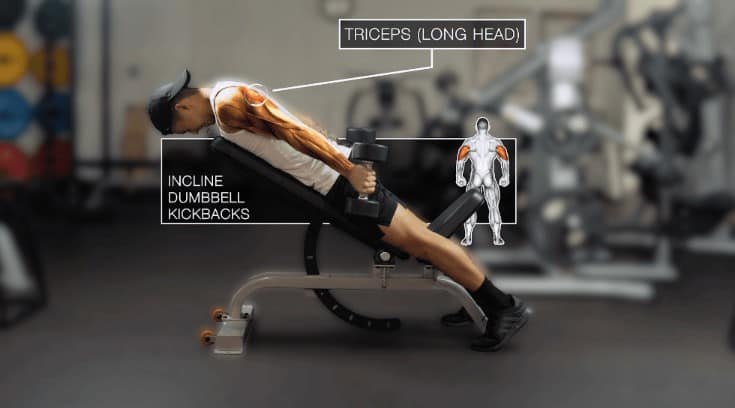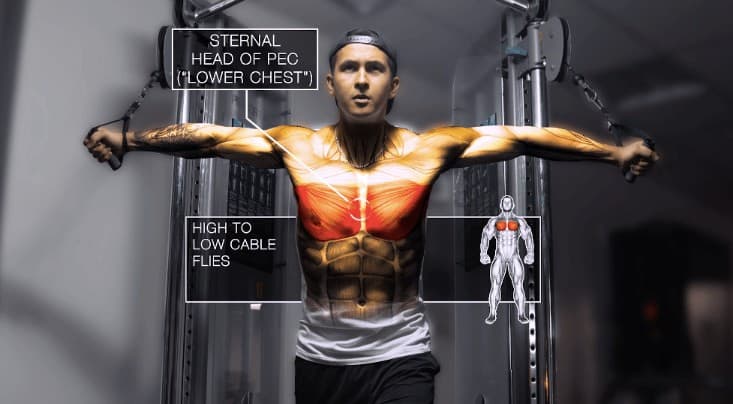The Best Full Body Workout For Growth
If you want to learn an effective full body workout routine optimized for muscle growth, then you need to read this article.
Full body workouts are one of the best workout splits for muscle growth and strength regardless of your training experience. They not only enable you to optimize your training frequency and recovery throughout the week but are also time efficient - and in this case requiring only 3 workouts per week.
However, in order to maximize the benefits of a full body workout routine, you need to adequately target all of your major muscle groups within each workout:
And you need to do so in a balanced manner such that your muscles grow and strengthen proportionately overtime. Leading to not only a more aesthetic physique but also minimizing your risk of injury.
In this article, I’ll show you exactly how to do so based on current scientific literature and our anatomical understanding of the human body.
Every aspect of your training will benefit if you take the time to really understand the anatomy of your muscles (including small ones, like the serratus). That's why every single one of my programs walks you through the science behind every programmed exercise - and why you're doing what you do. Interested?
Click the button below to take my analysis quiz to discover the best program for you:
↓
The Full Body Workout Plan (Overview)
First off, to clarify, this full body workout routine consists of 3 workout days per week and will alternate between two different full body workouts like so:
Monday – Workout A
Tuesday – Rest
Wednesday – Workout B
Thursday – Rest
Friday – Workout A
Saturday/Sunday – Rest
Monday – Workout B
Tuesday – Rest
Wednesday - Workout A
Thursday - Rest
Friday – Workout B
Workout A will be covered in this article and workout B will be covered in a follow-up article.
Each workout will consist of mainly compound movements with a mix of various accessory exercises to minimize any potential muscle imbalances.
So with that being said, let’s take a look at what the optimal full body workout might look like.
The Best Full Body Workout (Workout A)
Exercise 1: Barbell Bench Press
The first exercise is the barbell bench press and is going to be your main chest exercise for this workout. It’s going to be responsible for contributing to most of your chest’s overall size and thickness overtime.
More specifically, due to the flat angle of the bench, it’s going to emphasize the sternal portion, or middle part, of your chest while also developing your shoulders and triceps muscle.
So as you perform this exercise you’ll want to focus on feeling the below highlighted muscles working, with most of the tension being felt in the chest:
Now the bench press was chosen for various reasons.
First off, it’s great at activating the chest.
Multiple studies like this 2000 EMG paper by Behren’s & Buskies have found bench press to elicit the highest chest activation when compared to other common chest movements:
...and this seems to translate to better chest growth as well.
For instance, two recent papers that tracked bench press strength and chest growth overtime have found a strong positive correlation between them
Suggesting that in most cases, a strong bench does indeed equate to a big chest.
And regarding form, you’ll want to come all the way down to your chest to accomplish a full range of motion.
This is because multiple papers have found that for compound movements like the bench press...
A full range of motion is more effective for muscle growth, even if heavier weights are used with a partial range of motion.
So unless you have previous shoulder injuries preventing you from doing so or you’re goal is to improve a specific sticking point...
Then aiming for a full range of motion with this exercise would be your best bet for growth.
Exercise 2: Barbell Back Squat
Next, we’re going to move onto a lower body exercise before proceeding onto the next upper body movement. This just helps to optimize our recovery and performance with each exercise throughout your total body workout.
The barbell back squat is the exercise of choice here since it’s been repeatedly shown in multiple papers to elicit very high quadriceps activation. However, it will also heavily involve the glutes and various other lower body muscles.
You should mainly feel the tension in the muscles highlighted below as you perform the exercise:
And again with this compound movement you want to utilize a full range of motion to maximize growth.
In fact, illustrating the importance of this...
A 2014 paper by McMahon and colleagues found that there was a two-fold increase in muscle size after only 8 weeks for subjects using full ROM squats compared to partial range of motion squats:
And although what constitutes full range of motion will vary based on your anthropometry, I’d stick with what the research recommends as optimal. Simply aim to come down to at least slightly below parallel or deeper if your mobility enables you to do so safely.
Exercise 3: Pull-Ups
Pull-ups are going to be the next upper body exercise and your main back exercis
e for this workout.
The main muscle worked will be the lats. But as shown below, various shoulder and scapular stabilizers and other muscles will be involved as well:
As you perform this movement, you should feel the above highlighted muscles working, with most of the tension being felt in the lats.
And once you’re able to successfully complete around 10-12 bodyweight pull-ups straight, you’ll want to then progress it. You can do so by slowly loading it with weight using a weight belt or holding a dumbbell between your feet.
But on the other hand, if you’re currently unable to do pull-ups, then you have a few options. Band assisted pull-ups, machine pull-ups, and/or sets of slow negative pull-ups are decent alternatives to start with and progress until you’re able to successfully complete bodyweight pull-ups.
Knowing how to tweak/replace exercises that suit your training goals is pretty complicated. Thankfully, though, the team here at BWS has the necessary expertise to do just that. Our 2-on-1 coaching program takes the guesswork out of training, nutrition, and even mobility work - so you can focus on what matters: making gains. If you're interested:
Click the button below to take my analysis quiz to find out more about the 2-on-1 coaching program:
↓
Exercise 4: Lying Dumbbell Hamstring Curls
Next, going back to the lower body muscles, we’re going to be using lying leg curls.
I’d suggest trying out this variation with a dumbbell held between your feet as it helps ensure that you’re controlling the weight throughout each rep.
As shown below, this exercise will mainly target the hamstrings:
Again, as you perform each rep, you’ll want to focus on feeling the hamstrings working while avoiding any lower back involvement by keeping your abs engaged.
Now the main reason why this exercise is included is to further strengthen the hamstrings.
This is crucial because as shown in this 2009 EMG paper, the back squat doesn’t sufficiently activate the hamstrings. In fact, as shown below, the hamstrings only reach about 27% activation during the squat:
...which is much lower than other common hamstring movements.
So since the hamstrings need to be balanced out with the quadriceps for injury prevention, this exercise is vital to include.
More specifically though, research has indicated that it’s the eccentric strengthening of the hamstrings that’s important for both enhancing athletic performance and preventing injury.
Meaning that when performing this movement, you want to really control the weight and use a slow eccentric of a few seconds on the way down of each rep.
Just be aware that this exercise will cause quite a bit of post-workout soreness if you’re not used to it, so take it easy in terms of load and progress from there.
Exercise 5: Standing Overhead Press
The last major compound movement of this workout will be the standing barbell overhead press. This shoulder exercise is essential when it comes to upper body development and strength. Although the full body is involved, the main muscles at play here will be the anterior deltoids, triceps, and the serratus anterior:
As for the reasoning for this exercise, it has been shown in studies like this one by Behren & Buskies to be the best exercise for the anterior deltoid:
In addition, when compared to other similar shoulder pressing exercises, it enables you to lift the most weight. And from a practical standpoint is also the easiest shoulder exercise to overload with more weight as you progress, which is why I’d recommend incorporating it into your routine.
However, research does also show that the seated dumbbell press elicits similar activation, so feel free to use that as an alternative if it’s a more comfortable movement for you.
Additional Accessory Exercises
Next up in this total body workout routine, we’re going to move onto a couple more accessory exercises to help minimize any potential muscle imbalances as you progress.
Exercise 6: Face Pulls
The first accessory movement is going to be the facepull. This movement is essential for shoulder health, posture, and balancing out the pulling repetitions with all the pressing in this full body workout.
The main muscles worked are the rear delts, mid and lower traps, and the various rotator cuff muscles as shown here:
Focus on feeling the above highlighted muscles working as you perform this exercise.
These can be done kneeling or standing, but regardless you want to keep the elbows high and drive them back as you pull the rope towards your face.
At the end position, your shoulders should be externally rotated such that you’re in a biceps flexing pose in order to best emphasize the rotator cuffs and rear delts. You also want to ensure you aren't compensating by arching your lower back as you perform the movement:
I’d definitely suggest using relatively lighter weights for these and really focus on activating the right muscles.
Exercise 7: Drag Curls
The last exercise of this full body workout routine is going to be a biceps exercise; the drag curl.
Due to the shoulder extension component of this exercise, it will help preferentially target the long head of the biceps, or the outer head, which otherwise doesn’t get as much attention with our previous exercise selection:
To perform it, simply use a weighted bar or barbell
and lift the bar as close as possible in front of your body by driving the elbows behind the body. Lower the weight in the same fashion.
I’d suggest using a much lighter weight than you would in a standard biceps curl and perfecting the movement before progressing.
The Best Full Body Workout (Workout A)
So here’s what your full body workout A could look like:
Barbell Bench Press: 3-4 sets of 6-10 reps
Barbell Back Squat: 3-4 sets of 6-10 reps
Pull-Ups: 3-4 sets of 6-10 reps
Lying Hamstring Dumbbell Curls: 3-4 sets of 10-15 reps
Standing Overhead Press: 3-4 sets of 6-10 reps
Face Pulls: 3-4 sets of 10-15 reps
Drag Curls: 3-4 sets of 8-10 reps
Calves and/or abs exercises can definitely be added as part of the accessory movements as well.
Just keep in mind that if you’re a beginner lifter, sticking to just the main compound movements and the low end of the range of sets per exercise would likely be best to start. And then you can gradually add more volume overtime.
Also keep in mind that you can play around with the exercise order of the workout. Several studies have shown a trend where lifters get better gains for exercises that are done early in a session.
So by knowing what each exercise in this workout targets, you can re-arrange the exercises based on what you want to prioritize. For example, if you wanted to focus on pull-up strength and back growth, you could simply perform the pull-ups first rather than the bench press.
The Best Full Body Workout (Workout B)
Exercise 1: Deadlift
Although the conventional deadlift is shown here, feel free to experiment with other deadlift variations to find what feels best for you. Regardless of what you choose though, it’s vital that you perform some sort of deadlift within this workout.
Why?
Because as shown in this 2015 study from the Journal of Strength and Conditioning Research:
Activation of the lower hamstrings is maximized with knee-dominant exercises like the leg curls we did in workout A:
Whereas activation of the upper hamstrings is maximized with hip dominant exercises like the deadlift:
Simply meaning that you’ll want to incorporate both types of movements as we’ve done in our routine. This will help fully develop your hamstrings in a balanced manner and minimize your risk of injury.
Exercise 2: Incline Dumbbell Press
The incline dumbbell press is going to be your main chest movement for this workout. Given that we performed the flat bench in workout A, we want to now include a chest movement that emphasizes the clavicular head of the pecs ("upper chest"). This will simply prevent it from lagging behind overtime.
As you perform each rep, you want to really focus on feeling this region of the chest working.
As for why this exercise was chosen:
- Research, such as this EMG analysis by Bret Contreras, indicate that this exercise activates the upper chest very well compared to other chest exercises.
- It also both allows a greater range of motion than can be achieved with most other chest exercises.
- It better prevents muscle imbalances on one side from developing when compared to barbell exercises. T is important for us since we stuck with the barbell bench press in workout A.
And as for the optimal bench angle, research tends to show the best upper chest activation with an angle of roughly 30 to 56 degrees. However, this will vary based on your anthropometry so experiment with every angle above flat to see what best activates your upper chest while minimizing your front delt involvement.
Exercise 3: Chest Supported Row (OR Inverted row)
Next, we’ll move onto the main back movement of this workout which will be a chest supported row. Most of the upper back musculature will be worked. But more emphasis is placed on the mid-back muscles like the traps and rhomboids as shown below:
It’s essential that we include a rowing movement to target these mid-back muscles since they aren’t as effectively targeted in vertical pulling movements like the pull-ups in workout A.
Why exactly do I recommend performing your rows either chest-supported on a bench or machine OR inverted from a bar?
Well, simply to help minimize the lower back involvement which is already adequately worked in the deadlifts performed earlier.
Thus, any form of chest support when pulling will accomplish this.
But the inverted row is also a great alternative as well. Advocating its effectiveness, this 2009 paper by Fenwick and colleagues have found that:
The inverted row elicits significantly less spinal loading on the lower back when compared to other common pulling exercises while still providing sufficient activation of the upper back muscles.
In the event that you do choose this alternative however, make sure you're using an overhand grip. As for why this matters, this 2014 paper analyzed the inverted row and found that a pronated grip results in significantly greater rear delt and mid trap activation when compared to supinated grip.
Thus indicating that to maximize this exercise’s effectiveness, you’ll want to use an overhand grip that’s slightly wider than shoulder-width apart.
Exercise 4: Bulgarian Split Squat
Next, we’ll move onto a personal favourite of mine; the Bulgarian split squat. The main muscles worked will be the quadriceps and glutes, and will also involve the hamstrings quite a bit as well.
But, as I’ve noted in past videos, you can play around with your step length to vary the activation of certain muscles.
This exercise is something I’d highly recommend not only because it’s a unilateral movement which helps minimize any potential muscle imbalances...
...but also because it compliments your squat strength from workout A quite well.
For instance, one 2016 study on Rugby Players found that:
The Bulgarian split squat was just as effective at increasing back squat strength as the back squat itself – while placing less strain on the lower back.
Thus, proving its effectiveness for both size and strength.
And as you perform the movement you want to focus on pushing up with the front leg and avoid compensating by pushing up with the back leg.
If you struggle with your balance however then you can start having your back foot on a lower platform and gradually increase the height until you can safely balance on a bench.
Exercise 5: Dumbbell Lateral Raises
Next, we’ll move onto dumbbell lateral raises. This exercise is going to target the lateral deltoid, or mid delt, which has yet to receive much involvement given our previous exercise selection.
And lateral raises will likely your best bet for your growing this muscle. This is because they’ve been consistently shown, such as in this 2013 EMG analysis by Botton and colleagues, to elicit the highest lateral deltoid activity when compared to other common shoulder exercises.
Dumbbells are chosen here simply because they’re convenient and accessible to most people.
However, periodically switching it up with a chest-support, kettlebells and/or cables is something I’d highly recommend. This enables you to incorporate different resistance curves and helps you find a variation that you feel best activates your lateral deltoid while minimizing trap involvement.
Additional Accessory Exercises
Next, we’re going to move onto a couple additional accessory movements to help minimize any potential muscle imbalances as you progress.
Exercise 6: Incline Dumbbell Kickbacks
Since we had an accessory movement for the biceps in the full body workout A, we'll use a triceps accessory movement here. This exercise, incline dumbbell kickbacks, will emphasize the long head of the triceps which hasn’t received much attention given our previous exercise selection.
As mentioned in my past articles, this exercise enables the long head to be maximally shortened. As a result of this, it's been shown in EMG analyses to elicit very high activation of the long head compared to to other movements.
I’d suggest setting up the incline to roughly 30 degrees and ensuring that your elbows stay locked at your side and that your arms remain parallel with your body as you perform each rep.
Exercise 7: High to Low Cable Flies
The last exercise of this workout will be high to low cable crossovers. This movement will put more emphasis on the sternal head of the pecs, or lower chest, since the line of pull of the cables runs inline with the way the lower chest fibres run.
It’s important to include this exercise since none of our previous exercise selection prioritizes the development of this region of the chest.
A couple key points with this exercise are to:
- Keep the elbow position locked throughout each rep
- Cross your hands over at the bottom position to allow greater horizontal adduction in order to maximally activate the chest fibres
Workout B Summary
So to sum everything up for you, here’s what your full body workout B could look like:
Barbell Deadlift: 3-4 sets of 6-10 reps
Incline Dumbbell Press: 3-4 sets of 6-12 reps
Bulgarian Split Squat: 3-4 sets of 6-10 reps
Chest Supported Row OR Inverted Row: 3-4 sets of 6-12 reps
Dumbbell Lateral Raises: 3-4 sets of 10-15 reps
Incline Dumbbell Kickbacks: 3-4 sets of 10-15 reps
High to Low Chest Cable Flies: 3-4 sets of 10-15 reps
Your Full Body Workout PDF
For your convenience, I’ve compiled all of this information into an easy to follow, completely free PDF for you to download and reference while you’re at the gym.
It shows you the full workout, rest periods, what muscles each exercise targets, step-by-step tutorials with visuals, and more.
Click the button below to download Workout A:
↓
Click the button below to download Workout B:
↓
...But if you want to take things one step further and are looking for a workout and nutrition plan that combines all the research I do into a step-by-step program such that you can transform your body as efficiently as possible from your starting point...
Click the button below to take my analysis quiz to discover the best program for you:
↓
Anyways, that’s it for this article – hope you enjoyed it and found it useful! Don’t forget to give me a follow and connect with me on Instagram, Facebook, and Youtube as well to stay updated with my content. Cheers!






